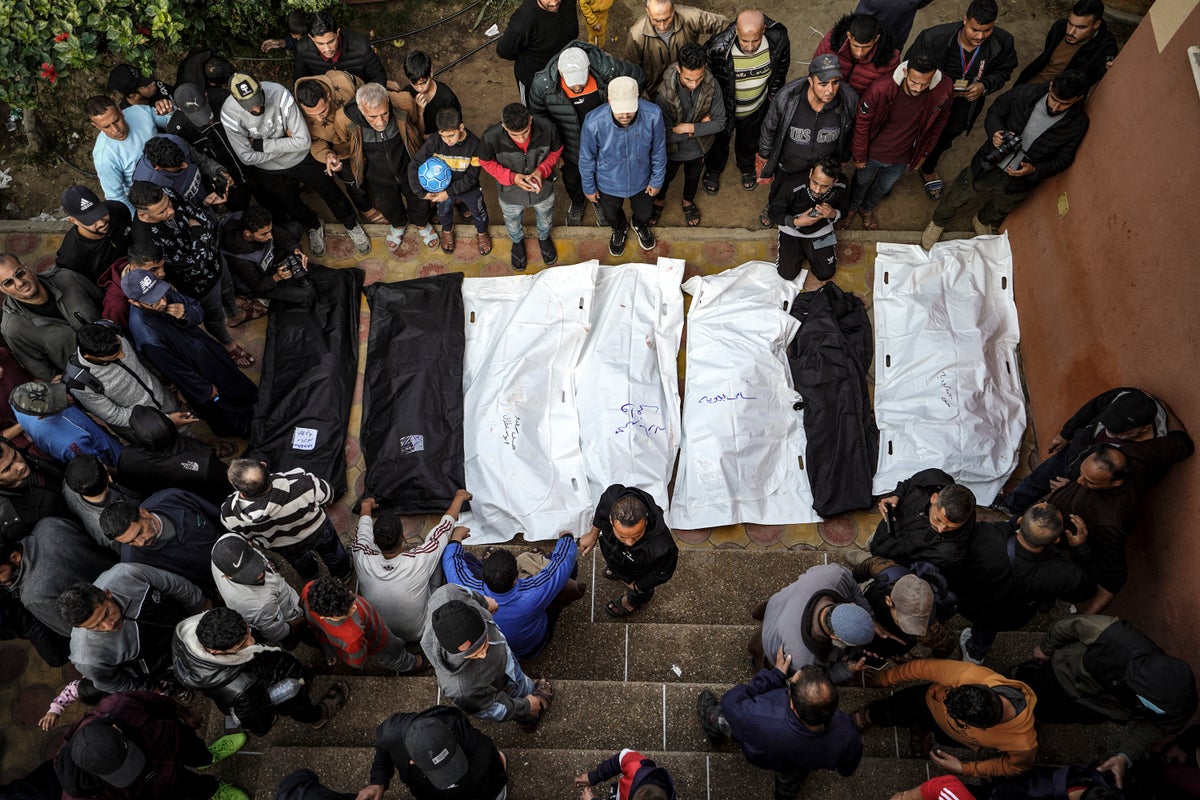
Israel has begun the third stage of its ground offensive in Gaza, launching an attack in areas densely populated with refugee camps, as aid agencies warned Palestinian civilians are running out of safe spaces.
Israeli military spokesperson Daniel Hagari said they have expanded their operations into the centre of Gaza having spent months fighting against Hamas in the north, before moving into the main southern city of Khan Younis in November. Its forces are now active throughout the Strip.
Residents of the Bureij, Maghazi and Nuseirat refugee camps, all located in central Gaza, reported heavy bombing into the early hours of Wednesday morning.
Displaced Palestinians from the Nuseirat, Bureij and parts of the Khan Younis refugee camps make their way to the city of Rafah— (EPA)
“It was a night of hell. We haven’t seen such bombing since the start of the war,” said Rami Abu Mosab, speaking from the Bureij camp, where he has been sheltering since fleeing his home in northern Gaza.
Israel has been issuing evacuation orders for central Gaza since last Friday but it covers an area that was home to 90,000 people before the war, which began on 7 October, and now shelters more than 61,000 displaced people, according to the United Nations humanitarian office.
A video posted by the Palestine Red Crescent Society showed medical workers recovering at least one body from the rubble of several destroyed buildings in the Bureij camp on Wednesday.
More than 21,100 Palestinians, most of them women and children, have been killed in nearly three months of fighting, including nearly 200 people in the last 24 hours, according to the health ministry in Hamas-ruled Gaza.
Smoke rises following an Israeli bombardment in the Gaza Strip, as seen from southern Israel— (AP)
Israel’s retaliatory attacks began after Hamas’s deadly assault on Israeli soil on 7 October killed 1,140 people and led to 240 more being taken hostage, more than a hundred of which remain there.
The consequent aerial bombardment of Gaza has razed swathes of territory to the ground, destroying thousands of buildings and shutting down more than a dozen hospitals.
Nearly 2 million Palestinians, roughly 85 per cent of the total population, have been displaced from their homes, most of whom have headed towards Rafah, on the southern Gaza border with Egypt, or Deir Balah in the centre.
Ahmed Bayram, a spokesperson for the Norwegian Refugee Council, a humanitarian group operating mainly in southern Gaza, said there is no space left for those fleeing.
Speaking about central Gaza, he told The Independent: “These are overcrowded residential areas and refugee camps that house tens of thousands.”
Concerning the orders for evacuation, he added: “This unlawful strategy of forcible transfers has repeated itself five or six times already in just under three months. There is no space to accommodate those fleeing to Deir Balah or southern Gaza.”
US secretary of state Antony Blinken is due to visit Israel next week to discuss the future of its war with Hamas— (AP)
He said that medication, food and water are becoming ever more scarce while diseases are becoming more prevalent.
It comes as US secretary of state Antony Blinken is planning to travel to Israel next week for his fifth visit since 7 October, according to the publication Axios.
The top US diplomat is expected to discuss the next stages of the war before visiting the West Bank, Jordan, United Arab Emirates, Saudi Arabia and Qatar.
Mr Blinken held a meeting with the Israeli minister of strategic affairs Ron Dermer in Washington DC on Tuesday. A White House official said the discussions centred around planning for a transition from high-intensity fighting in Gaza to a more localised approach targeting high-value Hamas targets.
Mr Blinken has previously admitted that far too many Palestinian civilians have been killed during Israel’s aerial bombardment of Gaza and its subsequent ground incursion.
Israel maintains that Hamas is using civilians as human shields.







